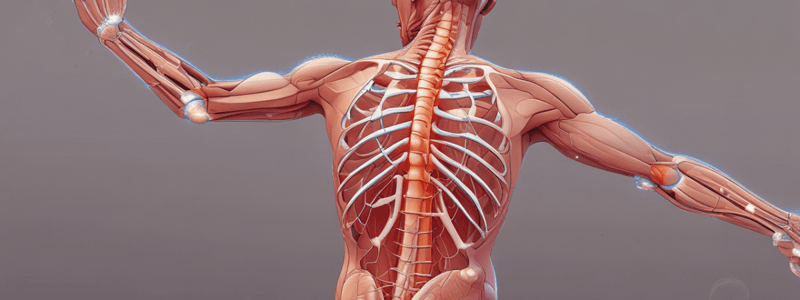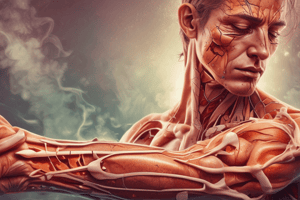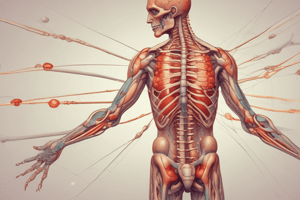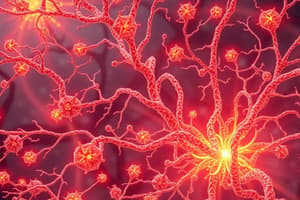Podcast
Questions and Answers
What type of pain results from a non-noxious stimulus?
What type of pain results from a non-noxious stimulus?
- Allodynia (correct)
- Nociception
- Hyperesthesia
- Hyperalgesia
What is the effect of tissue damage on nociceptors?
What is the effect of tissue damage on nociceptors?
- Sensitization to noxious stimuli (correct)
- No change in sensitivity to noxious stimuli
- Desensitization to noxious stimuli
- Decreased sensitivity to non-noxious stimuli
What is the mechanism by which NSAIDs reduce pain?
What is the mechanism by which NSAIDs reduce pain?
- Blocking the action of bradykinin
- Increasing the sensitivity of nociceptors
- Stimulating the release of endorphins
- Reducing the production of prostaglandins (correct)
What is the term for hypersensitivity to a noxious stimulus?
What is the term for hypersensitivity to a noxious stimulus?
Which of the following is an example of an inflammatory mediator?
Which of the following is an example of an inflammatory mediator?
Flashcards are hidden until you start studying
Study Notes
Inflammatory Pain
- Tissue damage releases inflammatory mediators, including prostaglandins and bradykinin, which increase the sensitivity of nociceptors to noxious stimuli.
- This process leads to sensitization in the pain pathway, resulting in hyperalgesia (hypersensitivity to noxious stimuli).
- Hyperalgesia is characterized by hypersensitive nociceptors.
- In addition, inflammatory pain can cause allodynia, which is pain resulting from a non-noxious stimulus.
- Allodynia is mediated by the activation of low-threshold mechanoreceptors and thermoreceptors.
- NSAIDs (non-steroidal anti-inflammatory drugs) reduce the production of prostaglandins, which contributes to the alleviation of inflammatory pain.
Studying That Suits You
Use AI to generate personalized quizzes and flashcards to suit your learning preferences.




